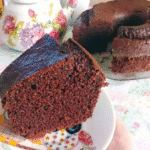Introduction
Bread, a staple food in many cultures, has a rich history dating back thousands of years. From simple flatbreads to artisanal loaves, the world of bread offers endless possibilities for experimentation and creativity. For baking enthusiasts, embarking on the journey of experimenting with bread can be both challenging and adventurous. In this essay, we will explore the challenges and adventures that await baking lovers in the kitchen as they dive into the world of experimental bread-making.
The Appeal of Experimental Breads
Before delving into the challenges, let us first understand why experimental bread-making holds such appeal for baking enthusiasts. Traditional bread recipes are time-tested and reliable, but they may lack the excitement and novelty that come with experimenting with different ingredients, techniques, and flavors. Experimental bread-making allows bakers to unleash their creativity and push the boundaries of traditional baking.
Creativity and Innovation
One of the primary reasons baking lovers are drawn to experimental bread-making is the opportunity to exercise their creativity and innovation. Unlike following a standard recipe, experimenting with bread allows bakers to mix and match ingredients, explore unique flavor combinations, and develop their own signature breads. This creative freedom is immensely satisfying for those who view baking as an art form.
Personalization
Experimental bread-making also offers bakers the chance to personalize their creations according to their tastes and dietary preferences. With an array of alternative flours, sweeteners, and additives available, individuals can tailor their breads to suit gluten-free, vegan, or other specialized diets. This customization adds a personal touch to the baking process and results in breads that are truly one-of-a-kind.
Culinary Exploration
For adventurous bakers, experimental bread-making serves as a gateway to culinary exploration. By venturing beyond traditional recipes, individuals can discover new ingredients from different cuisines and experiment with unfamiliar techniques. This culinary journey not only broadens one’s baking repertoire but also deepens their understanding of various culinary traditions around the world.
Challenges of Experimental Bread-Making
While experimental bread-making offers many rewards, it is not without its challenges. Bakers who dare to venture into uncharted territory often encounter obstacles that test their skills and patience. From failed experiments to unexpected outcomes, the path to mastering experimental bread-making is fraught with challenges.
Ingredient Selection
One of the initial challenges bakers face when experimenting with bread is selecting the right ingredients. Unlike following a traditional recipe with prescribed quantities and types of ingredients, experimental bread-making requires bakers to make informed decisions about which ingredients to use and how they will interact with one another. This process can be daunting, especially for those who are unfamiliar with the properties of different flours, yeasts, and additives.
Recipe Development
Developing a successful experimental bread recipe is another hurdle that bakers must overcome. Unlike conventional recipes that have been tested and perfected over time, experimental recipes are often born out of trial and error. Bakers may need to adjust ingredient ratios, fermentation times, and baking temperatures multiple times before achieving the desired results. This iterative process requires patience, perseverance, and a willingness to learn from mistakes.
Technical Skills
Mastering the technical aspects of bread-making is essential for success in experimental baking. Bakers must have a solid understanding of dough hydration, fermentation, shaping, and baking techniques to produce breads with the desired texture and flavor. Experimenting with unfamiliar ingredients or methods can further challenge one’s technical skills, requiring careful observation and adaptation to achieve optimal results.
Time and Patience
Experimental bread-making is not for the faint of heart or the impatient. Unlike other forms of baking that yield quick results, such as cookies or muffins, bread-making is a time-consuming process that requires careful attention at every stage. From mixing and kneading the dough to proofing and baking the bread, each step demands time and patience. Bakers must be prepared to invest hours, if not days, in their experimental creations, knowing that the end result may not always meet their expectations.
Strategies for Success
Despite the challenges, mastering experimental bread-making is achievable with the right strategies and mindset. Bakers who embark on this culinary adventure can increase their chances of success by following these strategies:
Research and Education
Before diving into experimental bread-making, bakers should arm themselves with knowledge about different ingredients, techniques, and recipes. Reading books, watching tutorials, and attending workshops can provide valuable insights and tips for success. Understanding the science behind bread-making is particularly important, as it enables bakers to make informed decisions and troubleshoot problems as they arise.
Start Small
Instead of attempting complex recipes right away, beginners should start with simple experiments and gradually work their way up to more challenging projects. This allows bakers to build confidence, refine their skills, and learn from their mistakes without becoming overwhelmed. Starting small also minimizes the risk of wasting ingredients and encourages bakers to focus on the fundamentals of bread-making.
Keep Detailed Records
Keeping detailed records of each baking experiment is essential for tracking progress and identifying patterns. Bakers should record the ingredients used, the quantities, the mixing and fermentation times, and any observations or modifications made throughout the process. This documentation enables bakers to replicate successful experiments and troubleshoot unsuccessful ones more effectively.
Embrace Failure
In the world of experimental bread-making, failure is inevitable—and that’s okay. Every failed experiment is an opportunity to learn and improve. Instead of becoming discouraged by setbacks, bakers should embrace them as valuable learning experiences and use them to refine their techniques and recipes. With each failure, bakers inch closer to mastery and unlock new possibilities for creativity and innovation.
Exploring the Fascinating World of Bread-Making: Curiosities and Insights
Bread-making is an ancient craft that has been practiced for millennia, and yet it continues to captivate and intrigue people around the world. From the simplest of ingredients to the most complex of techniques, there are countless curiosities to uncover in the world of bread-making. In this article, we will delve into some of the most fascinating aspects of bread-making, from its historical roots to its modern innovations.
1. Ancient Origins
Bread-making traces its origins back to ancient civilizations, where it played a crucial role in the development of human society. The earliest evidence of bread-making dates back to around 10,000 BCE in the Fertile Crescent, where early humans discovered that they could grind grains into flour, mix it with water, and bake it over a fire to create a simple form of bread. These ancient breads were likely flatbreads, cooked on hot stones or clay ovens, and served as a staple food for early agricultural communities.
2. The Role of Yeast
One of the key ingredients in bread-making is yeast, a microorganism that plays a vital role in the fermentation process. Yeast converts sugars in the dough into carbon dioxide gas and alcohol, causing the dough to rise and develop its characteristic texture and flavor. While wild yeast naturally occurs in the environment and can be captured from the air or the skins of fruits, modern bread-making often relies on cultivated strains of yeast for consistency and reliability. The discovery of yeast and its role in fermentation revolutionized bread-making and led to the development of a wide variety of breads with different textures and flavors.
3. Regional Varieties
Bread-making is a deeply ingrained part of many cultures around the world, resulting in a diverse array of regional bread varieties. From the baguettes of France to the naan bread of India, each culture has its own unique traditions, techniques, and ingredients when it comes to bread-making. These regional varieties reflect the local climate, agriculture, and culinary preferences of each region, making bread not just a source of nourishment, but also a cultural expression.
4. Artisanal Craftsmanship
In recent years, there has been a resurgence of interest in artisanal bread-making, with many bakers returning to traditional methods and techniques. Artisanal breads are often made with simple, high-quality ingredients and undergo long fermentation periods to develop complex flavors and textures. Bakers who practice artisanal bread-making take pride in their craftsmanship, paying careful attention to every step of the process, from mixing and kneading the dough to shaping and baking the loaves. The result is breads that are not only delicious but also a testament to the skill and dedication of the baker.
5. Gluten-Free Alternatives
With the rise of gluten intolerance and celiac disease, there has been growing demand for gluten-free alternatives to traditional wheat bread. Fortunately, there are now a wide variety of gluten-free flours and ingredients available that allow people with gluten sensitivities to enjoy bread without sacrificing taste or texture. Gluten-free breads are made from alternative grains such as rice, quinoa, and millet, as well as non-grain flours such as almond flour and coconut flour. While gluten-free bread-making presents its own set of challenges, innovative bakers have developed techniques to create gluten-free breads that are every bit as delicious as their wheat-based counterparts.
6. Bread as a Symbol
Throughout history, bread has held a symbolic significance beyond its role as a basic foodstuff. In many cultures, bread is seen as a symbol of nourishment, sustenance, and hospitality. It is often used in religious rituals and ceremonies, such as the Christian sacrament of communion or the Jewish tradition of breaking bread together. Bread is also a symbol of community and sharing, as evidenced by the tradition of breaking bread with friends and family during meals. In literature and art, bread often carries metaphorical meanings, representing life, abundance, and the cycle of birth and death.
Bread-making is a timeless craft that continues to inspire and delight people around the world. From its ancient origins to its modern innovations, bread-making offers a wealth of curiosities to explore and insights to uncover. Whether you’re a seasoned baker or a curious novice, there is always something new to learn and discover in the fascinating world of bread-making. So roll up your sleeves, dust off your apron, and embark on your own bread-making adventure—you never know what delicious surprises await!
Conclusion
Experimental bread-making is a challenging yet rewarding pursuit that offers endless opportunities for creativity, innovation, and culinary exploration. By venturing beyond traditional recipes and embracing experimentation, baking lovers can unleash their creativity, personalize their creations, and embark on a culinary journey like no other. While the road to mastering experimental bread-making may be fraught with challenges, with perseverance, patience, and a willingness to learn from failures, bakers can unlock the full potential of their creativity and enjoy the fruits of their labor in the form of delicious, one-of-a-kind breads.





